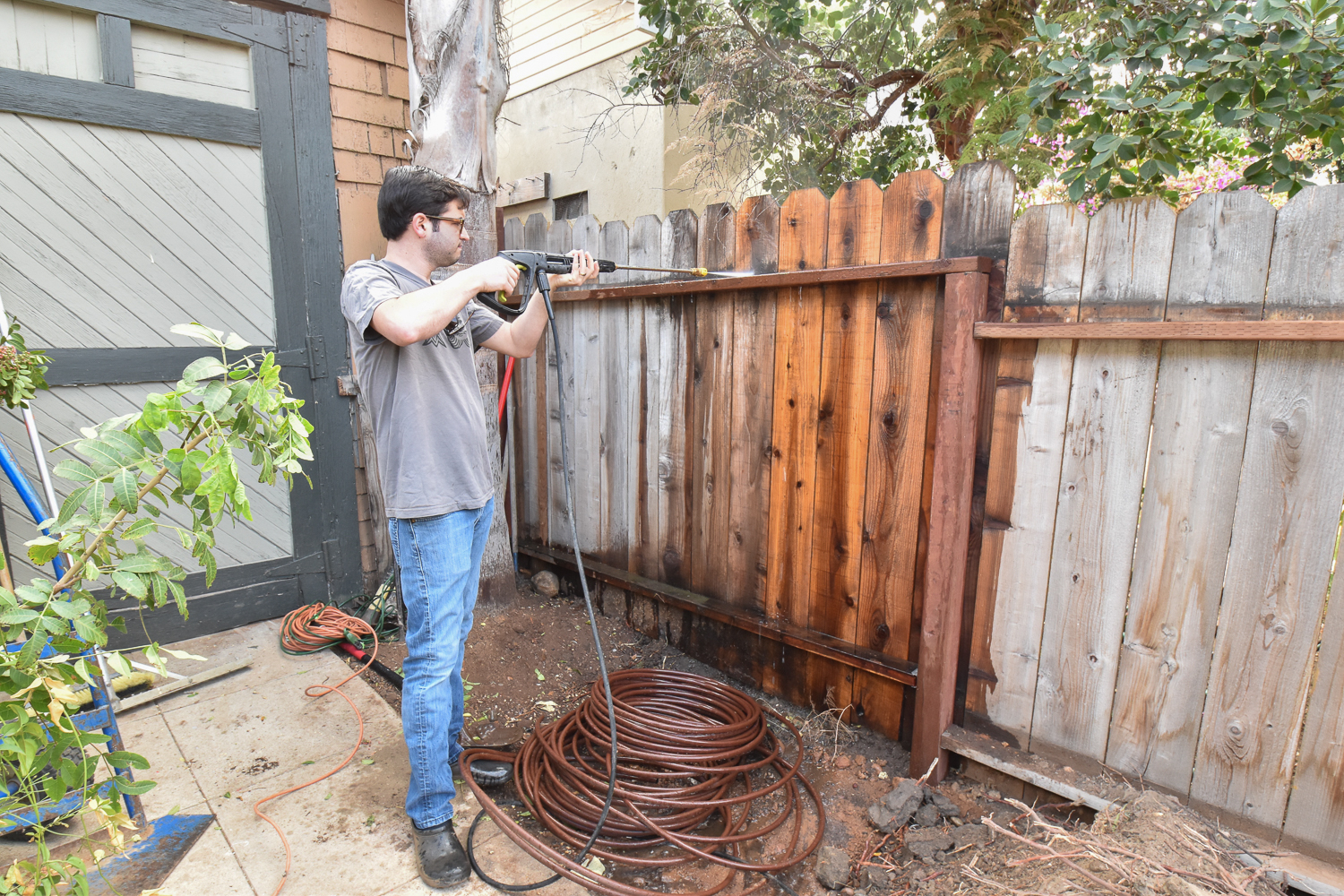Are you looking to give your old fence a new lease on life? Are you tired of the dull and worn-out appearance of your current fence? Well, you’re in luck! In this article, we’ll dive into the world of fence restoration and how it can bring new life to your old fences.
We’ll explore the various techniques and methods you can use to restore your fence and the benefits of doing so. From cleaning and repairs to painting and staining, we’ll cover it all. Whether you have a wooden, vinyl, or metal fence, we’ll provide you with practical tips and advice that will help you transform your old fence into a beautiful and vibrant addition to your property. So, if you’re ready to learn more about the exciting world of fence restoration, keep reading!
Fence Restoration: Bringing New Life to Old Fences
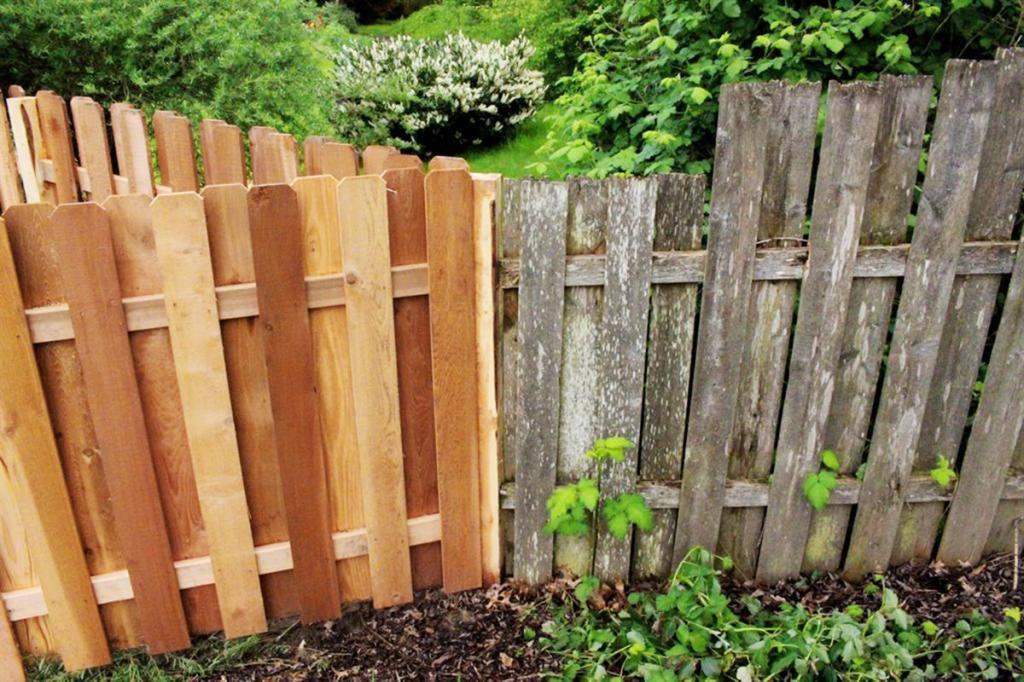
Introduction to Fence Restoration
Fence restoration is a process that aims to bring old, worn-out fences back to their former glory. Over time, fences can become damaged and lose their aesthetic appeal, but with proper restoration techniques, they can be revitalized and rejuvenated. In this article, we will explore why fence restoration is important, the benefits of restoring old fences, and the common challenges faced in the restoration process.
Why is fence restoration important?
Fence restoration is important for several reasons. Firstly, it helps to extend the lifespan of the fence, saving you the cost of completely replacing it. It also adds value and curb appeal to your property, making it more attractive to potential buyers if you ever decide to sell. Moreover, restoring old fences is an eco-friendly choice as it reduces waste and helps preserve natural resources.
Benefits of restoring old fences
Restoring old fences comes with numerous benefits. One of the main advantages is cost savings compared to installing a new fence from scratch. By restoring your existing fence, you can achieve the same visual appeal without the financial burden of a complete replacement. Additionally, restored fences can provide improved privacy and security, as well as enhance the overall aesthetics of your property.
Common challenges in fence restoration
Fence restoration can present various challenges, especially when dealing with older fences. One common challenge is assessing the condition of the fence and identifying areas of damage or decay. Another challenge is finding suitable materials for restoration that match the original fence design. Moreover, fence restoration may require specialized tools and equipment, which can pose additional challenges if not readily available.
Assessing the Condition of Old Fences
Before embarking on a fence restoration project, it is crucial to assess the condition of the fence thoroughly. This assessment helps determine the extent of damage and the necessary restoration steps. Here are some signs of damage to look out for and the tools required for inspecting fences.
Signs of damage in old fences
Old fences may exhibit various signs of damage, such as rot, rust, warping, or loose components. Examine the fence for any visible cracks, splintering, or discoloration, as these can indicate underlying issues. Additionally, check the stability of the fence posts and the overall structural integrity of the fence.
Tools for inspecting fences
To assess the condition of an old fence, you will need a few essential tools. These may include a tape measure to check for any sagging or misalignments, a level to ensure the fence is properly aligned, a moisture meter to detect signs of rot, and a flashlight for inspecting hard-to-reach areas.
Identifying rot, rust, and other issues
During the assessment, it is crucial to identify specific issues such as rot or rust. Rot commonly affects wooden fences, especially if the wood is exposed to moisture or termites. Rust, on the other hand, is a common problem in metal fences, particularly in areas with a high humidity level. By identifying these issues, you can plan the necessary restoration steps accordingly.

Preparing for Fence Restoration
Before diving into the restoration process, proper preparation is essential. This involves cleaning the fence surface, removing old paint or stain, and repairing any loose or broken components. Let’s delve into these steps in detail.
Cleaning the fence surface
Cleaning the fence surface is an important initial step in preparation. This can be done using a soft bristle brush or a power washer, depending on the fence material. Remove any dirt, debris, or mildew, paying close attention to corners and crevices. If the fence has a coating or previous paint, it may require additional steps for removal.
Removing old paint or stain
If the fence has layers of old paint or stain, removing them is necessary before applying a fresh coat. This can be done using paint stripper or a heat gun for stubborn paint. Always follow safety precautions and wear protective gear such as gloves and goggles when working with chemical strippers.
Repairing loose or broken components
Inspect the fence for any loose or broken components such as rails, pickets, or panels. Secure any loose pieces with appropriate fasteners or replace them if necessary. Additionally, tighten any loose screws or nails that may compromise the stability of the fence structure.
Choosing the Right Materials for Restoration
Selecting the right materials for fence restoration is essential to ensure longevity and maintain the fence’s original aesthetic appeal. Let’s explore the types of wood suitable for fence restoration, alternatives to wood, and the importance of selecting appropriate sealants and finishes.
Types of wood suitable for fence restoration
When restoring wooden fences, it is important to choose the right type of wood that can withstand weather elements and provide durability. Cedar and redwood are popular choices due to their natural resistance to rot and insect damage. Pressure-treated pine is another option, as it offers both affordability and durability.
Alternatives to wood for long-lasting fences
Wood may not be the best choice for all environments or preferences. Alternatives to wood for long-lasting fences include vinyl, composite materials, and metal. Vinyl fences are low-maintenance and highly resistant to rot or decay. Composite materials offer the look of wood with added durability and resistance to weather conditions. Metal fences, such as aluminum or wrought iron, provide a classic and elegant look that can stand the test of time.
Selecting appropriate sealants and finishes
After choosing the right materials, it is essential to apply sealants and finishes to protect the fence from moisture, UV rays, and other environmental factors. For wooden fences, consider using a quality wood stain or paint that offers UV protection and water resistance. For metal fences, applying a rust-resistant primer and paint can help prolong their lifespan.
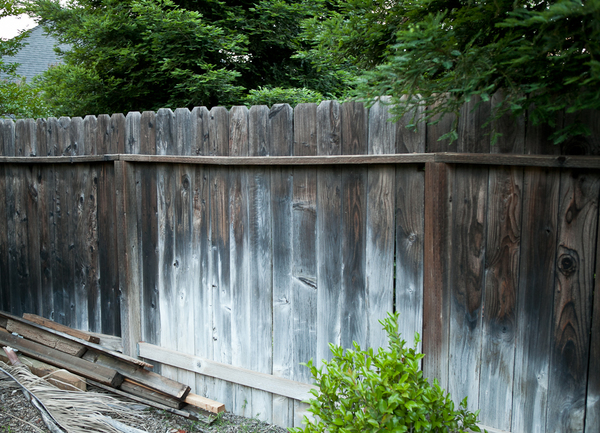
Tools and Equipment for Fence Restoration
Having the right tools and equipment is crucial for a successful fence restoration project. Let’s explore the essential tools, power tools for efficiency and quality, and safety gear necessary for working on fences.
Essential tools for fence restoration
Some essential tools for fence restoration include a hammer, screwdriver, pliers, pry bar, and a handsaw. These tools are essential for basic repairs and adjustments during the restoration process. Additionally, keep a tape measure, level, and carpenter’s pencil handy for accurate measurements and planning.
Power tools for efficiency and quality
Power tools can greatly expedite the fence restoration process while ensuring precision and efficiency. Some recommended power tools include a circular saw or miter saw for cutting fence components, an electric drill for screwing or unscrewing fasteners, and a sander for smoothing surfaces before painting or staining.
Safety gear for working on fences
When working on fence restoration, it is essential to prioritize safety. Wear appropriate safety gear such as gloves, safety glasses, and a dust mask when handling chemicals, paint strippers, or power tools. Additionally, wear sturdy footwear to protect your feet from any potential hazards.
Techniques for Restoring Different Fence Types
Different fence types require specific restoration techniques to bring them back to their former glory. Let’s explore the techniques for restoring wooden picket fences, chain-link fences, and wrought iron fences.
Restoring wooden picket fences
Wooden picket fences require cleaning, repairing, and refinishing to restore their beauty. Start by cleaning the fence surface, removing old paint or stain, and repairing any loose or broken components. Sand the wood to remove splinters and create a smooth surface before applying a fresh coat of paint or stain.
Restoring chain-link fences
Restoring chain-link fences involves cleaning and applying a fresh coat of paint or a rust-resistant spray. Start by removing any dirt, debris, or rust using a wire brush. Apply a suitable primer and topcoat that is specifically designed for metal fences to protect the chain-link mesh from rust and corrosion.
Restoring wrought iron fences
Wrought iron fences can be restored by removing rust, repairing any damaged sections, and applying a new coat of paint. Remove rust using a wire brush or sandpaper, then apply a rust converter to prevent further corrosion. Finish with a suitable paint or spray paint specifically designed for metals to protect the wrought iron from environmental elements.
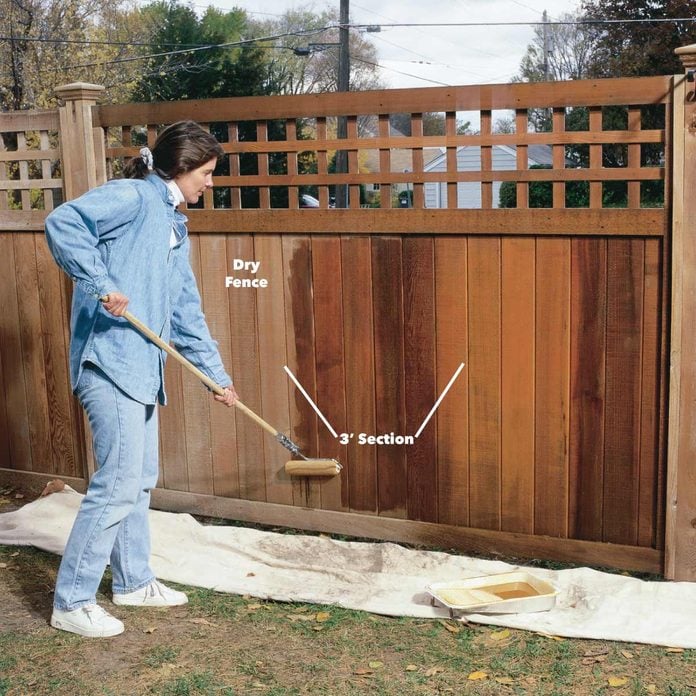
Repairing and Strengthening Fence Structures
Strong and sturdy fence structures are essential for the longevity and functionality of the fence. Here are some techniques for fixing loose or damaged posts, strengthening fence panels and rails, and replacing broken or missing pickets.
Fixing loose or damaged posts
Loose or damaged posts can compromise the stability of the entire fence. To fix loose posts, start by securing them with concrete or gravel. If the post is severely damaged, it may require replacement. Dig out the old post, install a new one, and secure it using concrete or gravel for added stability.
Strengthening fence panels and rails
To strengthen fence panels and rails, reinforce them with additional nails, screws, or brackets. If the panels or rails are severely damaged, they may need to be replaced entirely. Assess the damage and replace the damaged sections with new panels or rails that match the existing fence design.
Replacing broken or missing pickets
Broken or missing pickets not only compromise the aesthetics but also the functionality of the fence. Remove the damaged pickets and replace them with new ones of the same size and design. If the original pickets are no longer available, consider finding similar alternatives that match the overall look of the fence.
Painting and Staining for Fence Restoration
Applying a fresh coat of paint or stain is a crucial step in fence restoration, as it enhances the visual appeal and provides protection against the elements. Let’s explore choosing the right colors for fence aesthetics, proper surface preparation for painting, and applying stain for a natural wood look.
Choosing the right colors for fence aesthetics
When choosing colors for fence restoration, consider the overall aesthetics of your property and desired look. Neutral colors such as white, beige, or gray provide a classic and timeless appearance. Alternatively, bold colors can add personality and create a striking visual impact. Take into account factors such as the architectural style of your property, surrounding landscapes, and personal preference.
Proper surface preparation for painting
Proper surface preparation is crucial for a successful paint job. Start by thoroughly cleaning the fence surface to remove any dirt, dust, or debris. If the fence has peeling or chipped paint, scrape off the loose paint using a paint scraper. Sand the fence surface to create a smooth and even base before priming and painting.
Applying stain for a natural wood look
If you prefer the natural beauty of wood, applying a stain is an ideal choice for fence restoration. To achieve the best results, start by cleaning and sanding the wood surface to remove any previous stain or dirt. Choose a quality stain that offers UV protection and water resistance. Apply the stain evenly with a brush, roller, or sprayer, following the manufacturer’s recommendations for drying and reapplication.
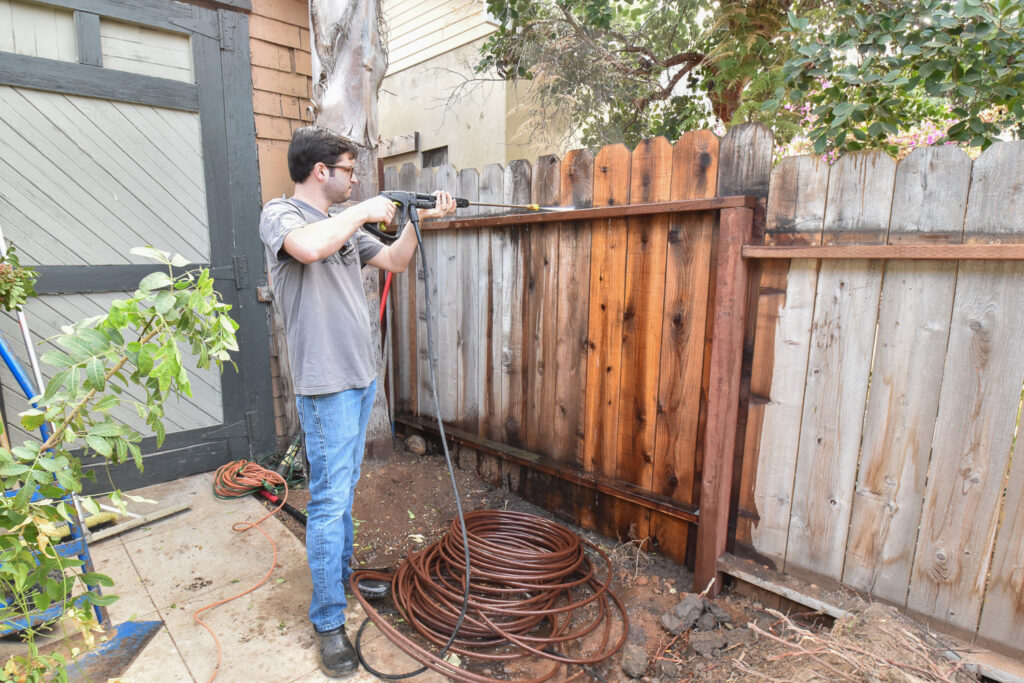
Maintaining and Preserving Restored Fences
To ensure the longevity and continued beauty of your restored fence, regular maintenance and preservation are key. Here are some tips for regular cleaning and maintenance, applying protective coatings for longevity, and dealing with future damage or wear.
Regular cleaning and maintenance tips
Regularly clean your restored fence to remove dirt, dust, and other debris. Use a mild detergent and a soft brush or cloth to gently scrub the fence surface. Avoid using abrasive cleaners or harsh chemicals, as they can damage the finish or protective coating. Additionally, trim any overgrown vegetation near the fence, as it can cause moisture buildup and accelerate decay.
Applying protective coatings for longevity
To protect your restored fence from the elements, consider applying a protective coating such as a clear sealant or waterproofing product. These coatings create a barrier against moisture, UV rays, and other environmental factors that can cause damage over time. Follow the manufacturer’s instructions for proper application and reapplication intervals.
Dealing with future damage or wear
Even with regular maintenance, fences can still experience future damage or wear. It is important to promptly address any issues to prevent further deterioration. Repair any loose or damaged components, touch up any chipped or peeling paint, and apply additional protective coatings as needed. Regularly inspect the fence for signs of damage and address them promptly to minimize costly repairs.
Enhancing Fence Appearance and Security
Restored fences provide an opportunity to enhance both the appearance and security of your property. Here are some ideas for adding decorative elements, installing security features, and optimizing privacy with fencing.
Adding decorative elements to restored fences
Enhance the aesthetics of your restored fence by adding decorative elements. Consider installing post caps or finials that match the architectural style of your property. Additionally, you can incorporate lattice panels on top of the fence for a touch of elegance and privacy. Planting climbing plants or vines along the fence can also add a natural and visually appealing element.
Installing security features
If security is a top priority, consider installing additional features to your restored fence. This can include adding a lockable gate or reinforcing the fence with anti-climbing measures such as spikes or deterrent plants. Motion sensor lights or security cameras can also be installed along the fence perimeter to deter potential intruders.
Optimizing privacy with fencing
Fences can provide a sense of privacy and seclusion. To optimize privacy, consider adding privacy slats to chain-link fences or installing taller fence panels. Alternatively, plant fast-growing tall shrubs or trees along the fence line to create a natural privacy barrier.
Costs and Budgeting for Fence Restoration
When planning a fence restoration project, it is important to consider the costs and create a budget. Here are some factors to consider when estimating the cost of materials, factors influencing the overall project budget, and the considerations between DIY and professional restoration.
Estimating the cost of materials
The cost of materials for fence restoration can vary depending on factors such as fence size, material type, and the extent of restoration required. Research local suppliers and obtain quotes for the necessary materials. Consider the cost of paints, sealants, replacement components, and any specialized tools or equipment needed for the restoration process.
Factors influencing the overall project budget
Several factors can influence the overall project budget for fence restoration. These factors include the size and complexity of the fence, the extent of damage, the choice of materials, and whether the restoration is a DIY project or done by professionals. Additional factors such as labor costs, permits, and any necessary professional consultations should also be considered.
Considering DIY vs. professional restoration
Deciding between DIY and professional restoration depends on various factors such as personal expertise, availability of tools, and budget. DIY restoration can save costs but may require more time, effort, and research. Professional restoration ensures quality results and may be more suitable for complex or extensive projects. Consider your skill level and available resources when making this decision.
Permits and Legal Requirements for Fence Restoration
Before starting a fence restoration project, it is important to research local regulations and obtain any necessary permits. Additionally, understanding property line and height restrictions is crucial to avoid potential legal issues. Let’s explore the importance of researching local regulations, obtaining necessary permits, and understanding property line and height restrictions.
Researching local regulations on fence restoration
Different regions and municipalities have their own regulations regarding fence restoration. Research local codes and regulations to ensure compliance with any restrictions on fence height, materials, or appearance. Failure to adhere to these regulations can result in fines and legal complications.
Obtaining necessary permits
In some areas, obtaining permits for fence restoration may be required. Permits ensure that the restoration project complies with local building codes and regulations. Contact your local building department or permit office to inquire about any necessary permits and the specific requirements for obtaining them.
Understanding property line and height restrictions
When restoring a fence, it is essential to understand the property line and any height restrictions. Ensure that the fence is constructed within your property boundaries to avoid potential disputes with neighbors. Additionally, consult local regulations to determine the maximum allowable fence height for your area.
Case Studies of Successful Fence Restoration Projects
Case studies of successful fence restoration projects can provide inspiration and insight into real-life examples. Let’s explore some before and after transformations, challenges faced and overcome, and inspiring stories from DIY enthusiasts.
Before and after transformations
One inspiring example of a fence restoration project involves a dilapidated wooden picket fence that was restored to its former glory. The fence was stripped of old paint, repaired, and repainted using a vibrant white color. The transformation significantly enhanced the curb appeal of the property and provided a welcoming entrance.
Challenges faced and overcome
Fence restoration projects often present challenges that require creative solutions. One challenge commonly faced is dealing with extensive rot or decay in wooden fences. This challenge can be overcome by replacing damaged sections and reinforcing the remaining structure. Additionally, addressing issues such as rust in metal fences requires effective rust removal techniques and proper surface preparation before painting.
Inspiring stories from DIY enthusiasts
Many DIY enthusiasts have taken on fence restoration projects and achieved impressive results. Their stories often highlight the satisfaction and sense of accomplishment that comes with revitalizing an old fence. DIY enthusiasts share their experiences, tips, and tricks, inspiring others to take on their own restoration projects and create beautiful, restored fences.
Conclusion
Fence restoration is a rewarding process that brings new life to old fences. By assessing the condition of the fence, preparing it properly, choosing the right materials, and implementing the appropriate restoration techniques, you can transform a worn-out fence into a stunning feature of your property. Regular maintenance and preservation will ensure its longevity and continued beauty. Whether you decide to embark on a DIY project or seek professional assistance, the key is to embrace the opportunity to bring new life to your old fences.
